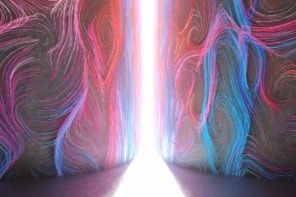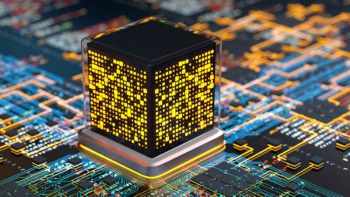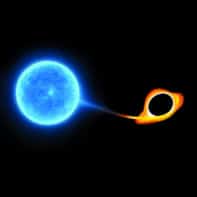
Why do we not see everyday objects in quantum superpositions? The answer to that long-standing question may partly lie with gravity. So says a group of physicists in Austria, which has shown theoretically that a feature of Einstein’s general relativity, known as time dilation, can render quantum states classical. The researchers say that even the Earth’s puny gravitational field may be strong enough for the effect to be measurable in a laboratory within a few years.
Our daily experience suggests that there exists a fundamental boundary between the quantum and classical worlds. One way that physicists explain the transition between the two, is to say that quantum superposition states simply break down when a system exceeds a certain size or level of complexity – its wavefunction is said to “collapse” and the system becomes “decoherent”.
Complex wavefunction
An alternative explanation, in which quantum mechanics holds sway at all scales, posits that interactions with the environment bring different elements of an object’s wavefunction out of phase, such that they no longer interfere with one another. Larger objects are subject to this decoherence more quickly than smaller ones because they have more constituent particles and, therefore, more complex wavefunctions.
There are already multiple different explanations for decoherence, including a particle emitting or absorbing electromagnetic radiation or being buffeted by surrounding air molecules. In the latest work, Časlav Brukner at the University of Vienna and colleagues have put forward a new model that involves time dilation – where the flow of time is affected by mass (gravity). This relativistic effect allows for a clock in outer space to tick at a faster rate than one near the surface of the Earth.
Dilating states
In their work, Brukner and colleagues consider a macroscopic body – whose constituent particles can vibrate at different frequencies – to be in a superposition of two states at very slightly different distances from the surface of a massive object. Time dilation would then dictate that the state closer to the object will vibrate at a lower frequency than the other. They then calculate how much time dilation is needed to differentiate the frequencies so that the two states get out of step with one another, so much that they can no longer interfere.
With this premise, the team worked out that even the Earth’s gravitational field is strong enough to cause decoherence in quite small objects across measurable timescales. The researchers calculated that an object that weighs a gram and exists in two quantum states, separated vertically by a thousandth of a millimetre, should decohere in around a millisecond.
Beyond any potential quantum-computing applications that would benefit from the removal of unwanted decoherence, the work challenges physicists’ assumption that only gravitational fields generated by neutron stars and other massive astrophysical objects can exert a noticeable influence on quantum phenomena. “The interesting thing about this phenomenon is that both quantum mechanics and general relativity would be needed to explain it,” says Brukner.
Quantum clocks
One way to experimentally test the effect would involve sending a “clock” (such as a beam of caesium atoms) through the two arms of an interferometer. The interferometer would initially be positioned horizontally and the interference pattern recorded. It would then be rotated to the vertical, such that one arm experiences a higher gravitational potential than the other, and its output again observed. In the latter case, the two states vibrate at different frequencies due to time dilation. This different rate of ticking would reveal which state is travelling down each arm, and once this information is revealed, the interference pattern disappears.
“People have already measured time dilation due to Earth’s gravity,” says Brukner, “but they usually use two clocks in two different positions. We are saying, why not use one clock in a superposition?” Carrying out such a test, however, will not be easy. The fact that the effect is far smaller than other potential sources of decoherence would mean cooling the interferometer down to just a few kelvin while enclosing it in a vacuum, says Brukner.
The measurements would still be extremely tricky, according to Markus Arndt, at the University of Vienna, who was not involved in the current work. He says they could require superpositions around a million times bigger and 1000 times longer lasting than is possible with the best equipment today. Nevertheless, Arndt praises the proposal for “directing attention” towards the interface between quantum mechanics and gravity. He also points out that any improvements to interferometers needed for this work could also have practical benefits, such as allowing improved tests of relativity or enhancing tools for geodesy.
The research is published in Nature Physics.



